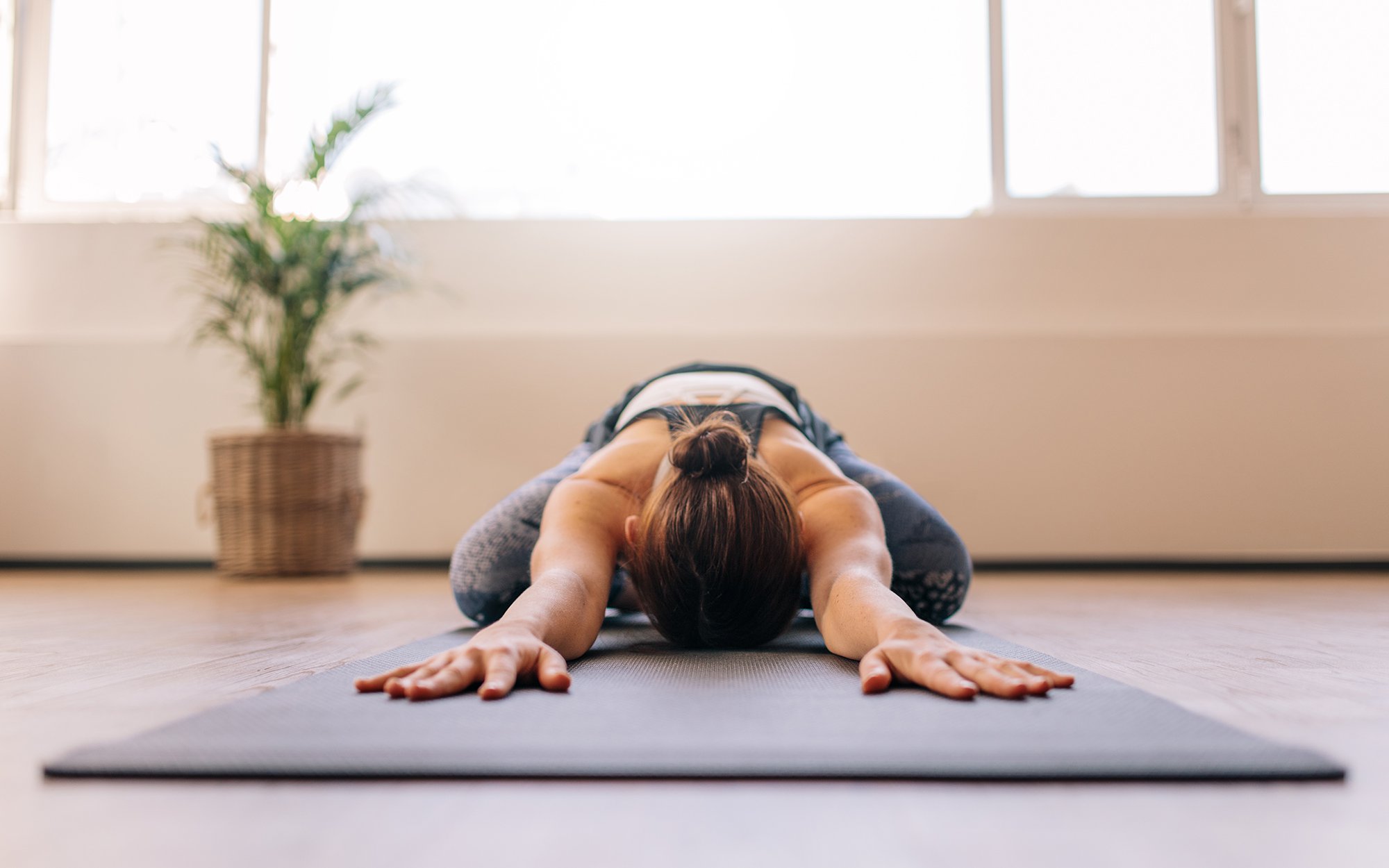
Clinical Editor: Megan Dodson, PA-C
As a nation, we’re getting progressively more sleep deprived. That lack of sleep is taking a toll on our health and safety, our productivity at work, and our relationships. Let’s face it, when you haven’t had a good night’s sleep–maybe for several nights in a row–you aren’t able to be your best self.
So what’s keeping us up all night? “A lot of it has to do with stress,” says Daniel Dinenberg, MD. “When you feel stressed, you can’t sleep and over time it becomes a vicious cycle.”
Continues Dinenberg, “Stress triggers things like increased heart rate and the release of adrenaline–which are okay for a few minutes–but when stress becomes chronic, those things can lead to insomnia.” Stress can make it difficult to quiet your brain at the end of a day, which in turn can make it hard to fall asleep. And if you wake up in the middle of the night, you’re likely to be kept awake by the chatter in your mind.
If this scenario sounds familiar, a regular yoga practice might be the ticket to more nights of sound sleep. “The focused awareness you foster during yoga–as with meditation or other mindfulness practices–helps to activate the more relaxing, parasympathetic response,” explains Dinenberg. When the parasympathetic nervous system is activated, your heart rate decreases, your blood pressure drops, and your breathing slows. All of these things signal the body to unwind, which can help facilitate sleep.
To help get your body–and your brain–ready for a restful night’s sleep, try this series of soothing postures 1-2 hours before bed. Hold each of the poses for at least one minute and focus on breathing deeply and evenly throughout the sequence.
1. Child’s pose
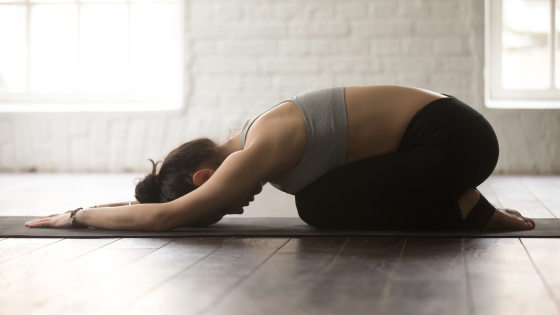
Kneel on the floor with your knees slightly apart. Sit back on your heels, rest your chest on your thighs, bring your forehead to the floor, and extend your arms out over your head or rest them alongside your body.
2. Supported bridge
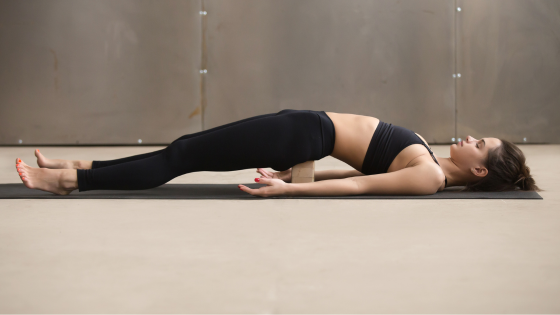
Lie on your back with your feet hip-width apart, planting them directly behind your hips. Keep your arms relaxed on the floor next to your body. Lift your hips up and place a yoga block beneath your sacrum (aka tailbone) for support. You can turn the block vertically or horizontally depending on how high you can comfortably lift your pelvis.
3. Supported bound angle pose
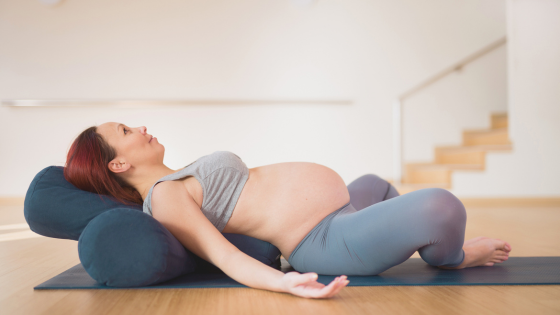
Using a bolster or a blanket rolled up lengthwise as a support for your torso, lie down with your pelvis at the bottom edge of the bolster or blanket. Bend your legs and bring the soles of your feet together. Then take a thinly rolled blanket, place it on top of the inner edges of your feet and wrap it around the outer part of your ankles. Draw the ends beneath your outer thighs to support the legs, then lie back onto the blanket or bolster and relax.
4. Reclined spinal twist
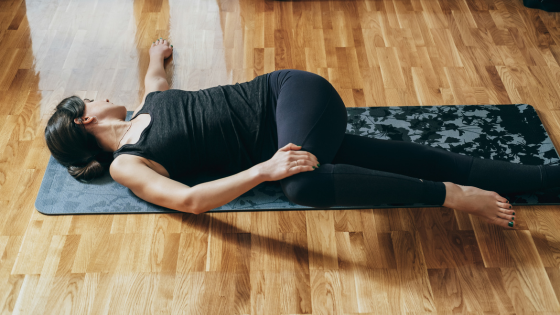
Lie on your back with your legs straight and your arms extended out to the sides (like the letter “T”). Bend your left leg and bring your knee toward your chest. Gently twist, bringing your left knee across your body and over to the right, resting it on the floor if you can. Turn your head to look over your left shoulder. Switch sides.
5. Legs up the wall
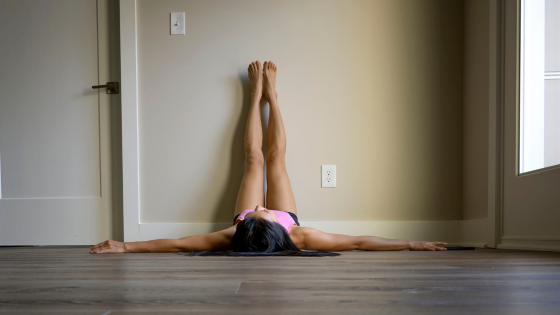
If you prefer a little cushioning under your buttocks, place a bolster or a couple of folded blankets on the floor against the wall. Lie down with your hips against the wall and straighten your legs up so they are resting against the wall. Spread your arms out to your sides in a “T” with your palms up.
6. Savasana
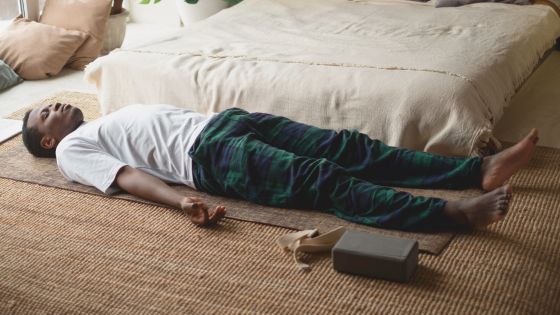
The best way to finish any yoga practice–but especially one designed to help lull you to sleep–is by spending several quiet minutes relaxing in savasana (aka corpse pose). The idea is to lie still, in a neutral position–legs hip-width and slightly turned out, arms relaxed at your sides with palms up–and focus on your breathing. As thoughts come into your head, acknowledge them, release them, and bring your focus back to your breathing. When it’s time to emerge from this pose, do it slowly. Start by wiggling your toes and fingers, stretching your arms and legs, and then roll to your side and gently push yourself back up to a sitting position.
You should feel an immediate sense of relaxation when you do this routine. With a regular nightly practice, the effects will be cumulative. As you become more proficient at focusing your attention on your breath, you’ll be better able to still your mind. And a quiet mind means a better night’s sleep!
Now that you’ve hacked how to use yoga to help you sleep, learn what a normal sleep pattern actually looks like.
Originally published December 10th, 2018.
The One Medical blog is published by One Medical, a national, modern primary care practice pairing 24/7 virtual care services with inviting and convenient in-person care at over 100 locations across the U.S. One Medical is on a mission to transform health care for all through a human-centered, technology-powered approach to caring for people at every stage of life.
Any general advice posted on our blog, website, or app is for informational purposes only and is not intended to replace or substitute for any medical or other advice. 1Life Healthcare, Inc. and the One Medical entities make no representations or warranties and expressly disclaim any and all liability concerning any treatment, action by, or effect on any person following the general information offered or provided within or through the blog, website, or app. If you have specific concerns or a situation arises in which you require medical advice, you should consult with an appropriately trained and qualified medical services provider.